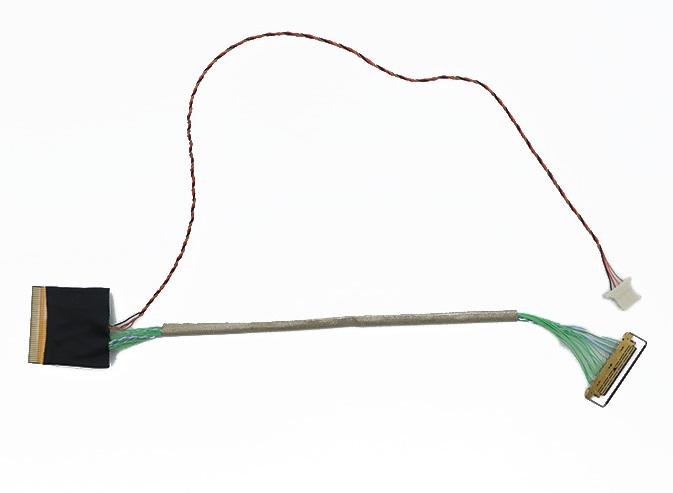How many wires make up an EDP Cable ?

EDP Cable, that is, Embedded DisplayPort cable, is a fully digital interface cable based on DisplayPort architecture and protocol, mainly used to connect the LCD screen and the main control board. About how many cables EDP Cable generally consists of and their role, the following will be explained in detail.
The composition of EDP Cable
EDP Cable is generally composed of multiple groups of stranded wires, each group of stranded wires contains one or more pairs of difference lines, which are used to transmit signals. Specifically, the EDP Cable can be 2 groups of strands, 3 groups of strands, 5 groups of strands or 8 groups of strands, depending on application requirements and screen resolution and other factors.
Take the common EDP Cable as an example, they may be composed of 2 or 3 groups of signal strands. Each strand usually includes a pair of differential wires for transmitting signals such as video data and audio data. In addition, the EDP Cable may also include other auxiliary channels and signal lines, such as HPD (hot swap detection) channels, but these usually do not directly form part of the strand, but exist as additional signal channels.
The role of EDP Cable
The main function of EDP Cable is to transmit the display content from the main control board to the LCD screen, so as to realize the display function of the screen. Specifically, the role of EDP Cable can be subdivided into the following aspects:
1. Video data transmission:
• EDP Cable transmits various types of video data through its Main Link. These video data include video pixel signal, video timing signal, video format signal, bit/pixel and color space signal.
EDP Cable supports video transmission with high resolution and high refresh rate, which can meet the needs of high-definition video display. For example, in high-resolution full HD or 4K displays, EDP Cable can stably transmit a large amount of video data, ensuring a clear and smooth picture.
2. Audio data transmission:
In addition to video data, EDP Cable also supports the transmission of audio data. This enables the LCD screen not only to display images, but also to play sound, thus enhancing the user experience.
3. Equipment control signal transmission:
EDP Cable also includes an auxiliary channel (AUX CH) for transmitting device control signals and link management signals. These signals are very important for the normal operation of the equipment and troubleshooting.
• For example, through the AUX CH channel, the main control board can send control commands to the LCD screen, such as adjusting brightness, contrast and other parameters; At the same time, the LCD screen can also feedback its working status to the main control board through the channel, such as whether the connection is successful and whether there is a fault.
4. Hot swap detection:
The EDP Cable also includes HPD (Hot Swap Detection) channels to detect whether the Layer E device and the underlying device are connected.
• When the device is connected or disconnected, the HPD channel is able to quickly detect this change and send the corresponding signal to the main control board. This enables the device to automatically adapt to changes in the connection state, improving the reliability and ease of use of the device.
Advantages of EDP Cable
1. High-resolution support:
• EDP interface supports higher resolution and refresh rate than traditional LVDS interface. This enables high-end displays such as HD screens and full-view screens to use EDP interfaces to achieve better display effects.
2. Two-way transmission:
• EDP interface supports two-way data transmission, which can transmit both display data, audio data and control signals. This makes communication between devices more flexible and efficient.
3. Good flexibility:
• EDP wiring adopts standardized interface specifications and can be matched with various types of LCD screens. This allows EDP Cable to have better flexibility in design and use, and can adapt to the needs of different devices and scenarios.
4. Low electromagnetic interference:
• The EDP interface adopts the micro-packet structure, which can realize the simultaneous transmission of multiple data, and the circuit is simple. This makes the EDP Cable generate less electromagnetic interference when transmitting signals, which is conducive to improving the stability and reliability of the equipment.
Sum up:
Cnomax EDP Cable is generally composed of multiple groups of stranded wires, each group of stranded wires contains one or more pairs of differential wires, used to transmit video data, audio data, equipment control signals and hot swap detection signals. EDP Cable has been widely used in high-end displays such as HD screen and full-view screen. It has the advantages of high resolution support, two-way transmission, good flexibility and low electromagnetic interference. With the continuous development of technology, EDP Cable will play an important role in more fields.
